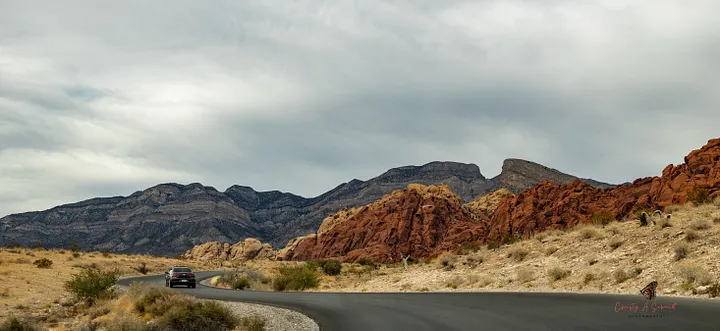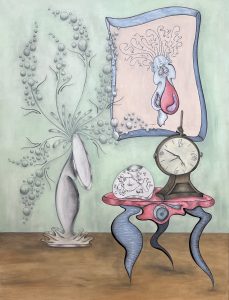Time for a road trip!
Time to travel!
Tom Hanks and the film, Big, made famous the floor piano played with your feet. And I found musical staircases, like the one in Boston’s Museum of Science, more fun that I liked to admit. My children and I would spend several minutes stepping out songs. (More like cacophonous stomping, but it’s fun, so who cares?!)
And as much as I love playing I those stairs, I love road trips.
So imagine my excitement at discovering MUSICAL ROADS.
You may have heard of them — or even driven on one. A musical road turns your automobile into a stylus: Like a needle on a grooved, pressed vinyl record. How so? Thanks for asking!
Well, way back when when I walked to school uphill both ways, we had these things called vinyl records. You would set your turntable speed to rotate at either 33 1/3, 45 or 78 revolutions per minute. (And you could have some funsetting a 33 1/3 record to 78 or vice versa…) Then, you would place your record on your turntable and set a stylus containing a needle onto the grooved record. The needle jumping over those grooves create vibrations which are translated electronically into music. At least that’s how I understand it.
Similarly, by varying the distance between raised strips of pavement, pitch is recreated. The closer the increment between grooves, the higher the pitch. The wider the increment between the grooves, the lower the pitch. Once the song’s notes are designed into a straight line of pavement, a car traveling over the grooves at a turntable speed of 33 1/3, 45 or 78, will reproduce the intended tune. National Geographic demonstrated the precision process.
MELODY ROAD HISTORY
The first known musical road dates back to 1995 when two Danish artists, Steen Krarup Jensen and Jakob Freud-Magnus, created The Asphaltophone— (90 seconds) As the first incarnation of this road magic, the artists used raised bumps instead of grooves. But the effect is the same — just a jarring a drive.
Engineers and highway safety experts report the musical road inspires drivers to slow down — reducing accidents by 70%.
Singing Highway, Route 66, near Alburquerque, New Mexico in Tijeras, plays America the Beautiful. Driving 45 miles per hour recreates the tune. But apparently two years later, the road needed to be tuned!
SING ALONG
Obviously, wear and change to the road surface will eviscerate the grooves. So care must be taken. For example, in Villepinte, Seine-Saint-Denis, France, Gaellic Guillerm created a melody road which was lost when the road was resurfaced.
The road tunes can also face public outcry. A stretch of road in The Netherlands played the Friesland provincial anthem. However, residents there describe the repeated 24-hours-per-day tune as crazy-making. I suppose it was driving them nuts. (Pun intended.) Complaints of psychological torture were so numerous, officials removed the installation.
Here’s a working example from Hungary. The project is a memorial to Laszio Bodi, the lead singer of the band Republic and their song Road 67.
In Lancaster, California, you can drive the William Tell Overture. Honda completed this installation to promote its Civic in 2008. Many critics find the installation unsatisfying, complaining it’s unacceptably out of tune.
The melody road in Anyang Korea plays Mary had a Little Lamb. Sounds great!
Even Auburn University has a musical road. Engineer Tim Arnold, an alumnus, designed the road to play Auburn’s fight song: War Eagle.
On short stretch in Japan, near Mount Fuji, if you drive 55 miles per hour, you can enjoy the opening piece from My Neighbor Totoro. Unlike a pressed vinyl record, the melody roads can be timed to any preferred speed.
Or how about the theme song, Always With Me from Spirited Away on a road in Japan near Nakanojo.
Or this one in Indonesia: Happy Birthday! It was specifically installed to reduce traffic accidents. And, because drivers need to reduce speed to hear the tune, road melodies are quite effective.
Or you can pass through Futami in Okinawa, Japan, and at 40 killometers per hour, you will hear this song, Futami-Jouwa.
This section of road in Beijing plays Ode to the Motherland.
PRECURSOR
In 1970, long before the Danish artists engineered what is generally accepted at the first melody road, Walt Disney installed a musical airstrip for Shawnee Airlines. The strip and airport is permanently closed, so airline visitors can no longer be surprised by the When You Wish Upon a Star welcome tune. However, if you drive along the road, at just the right speed, you can enjoy the magic!
Who would have thought?
Sounds like a great reason for a road trip!



